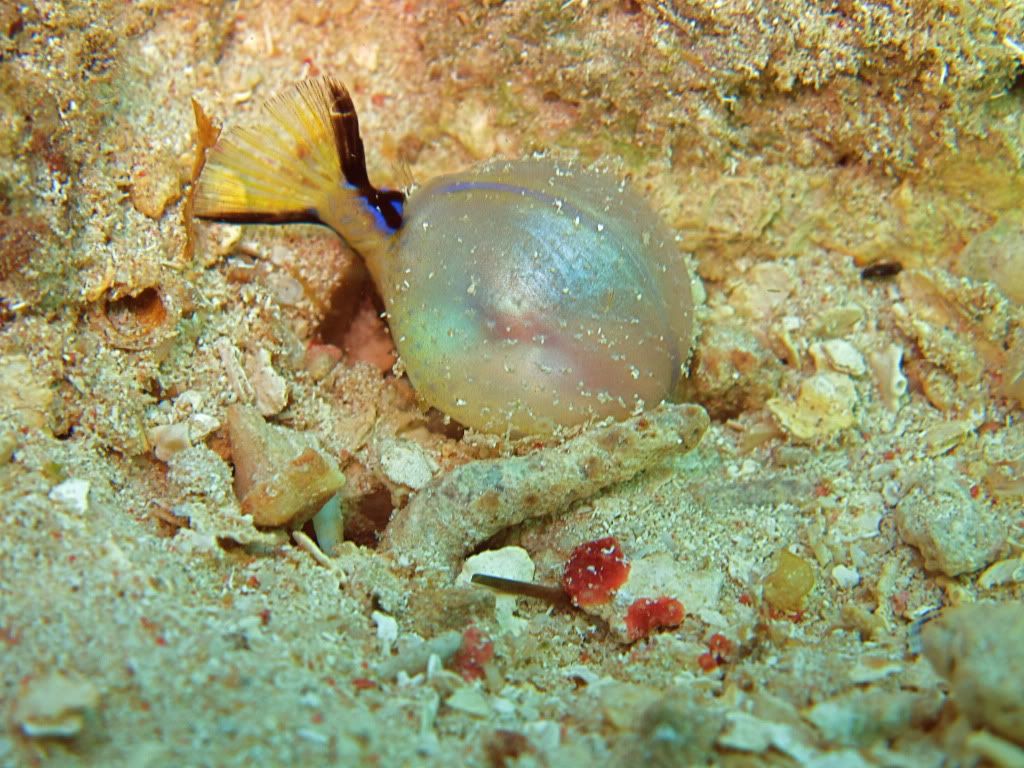I posted the question on Coral List, here are the first answers that was posted in reply:
Hi Will,
#1
My guess is that sharpnose puffers have the same type of recruitment as Bill Gladfelter and I observed for balloonfish (Diodon holocanthus) many years ago in St. Croix. The larvae are pelagic for a long larval life, up to a year. During this interval; they slowly gather into huge schools of many thousands of individuals (about 3cm long) which then recruit en mass to whatever coastal region is favorable within the time frame of development. The area then becomes completely flooded with recruits which gradually disperse and are preyed upon. You could call this a sort of 17-year locust type of recruitment.
#2
I saw your posting on croal list concerning the Sharpnose puffer. I'm a biologist for Hol Chan Marine Reserve, Ambergris Caye Belize
and we have noticed the same thing here. At fist we we thought it was an isolated case but it now seems that it is occuring all over he MBRS region. We reported it here in Belize first and then a partner in Mexico reported it from Akumal down to Xcalak and we have seen it here all over from north south here. the cause for it is still on known. I have been leasing with various reef scientist and some are suggestong that it may be a bloom in recruitment, but a definite cause is yet to be identified.
Have ou seen any dead. Both in Belize and in Mexico we have notice that they were dying bu the hundreds however that has stoped now. We have also noticed some legions on some of them i have attached a brief report that Gaby Rodriguez did in Mexico, i've also cc her on this email. We have also notice several baby turtle washing up dead with 3-4 sharpnose puffer in their stomach.
We are monitoring to se if the numbers will decline in the next couple months.





